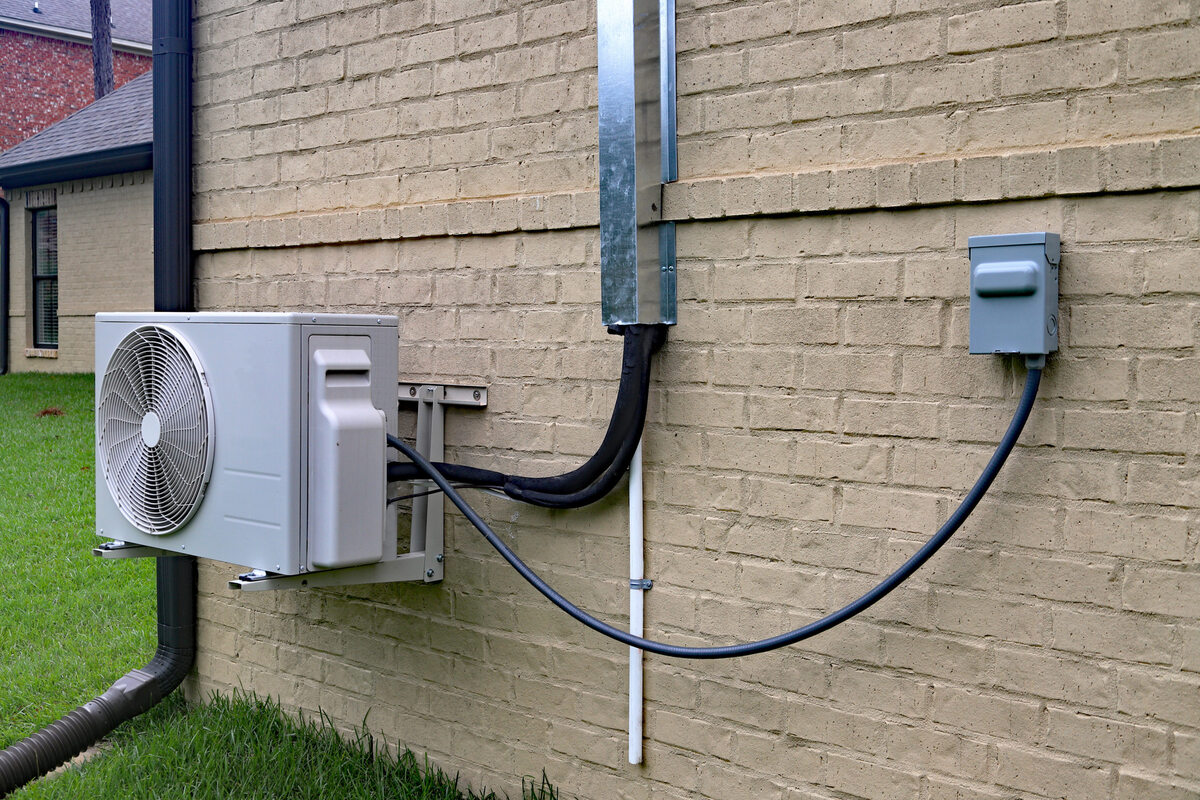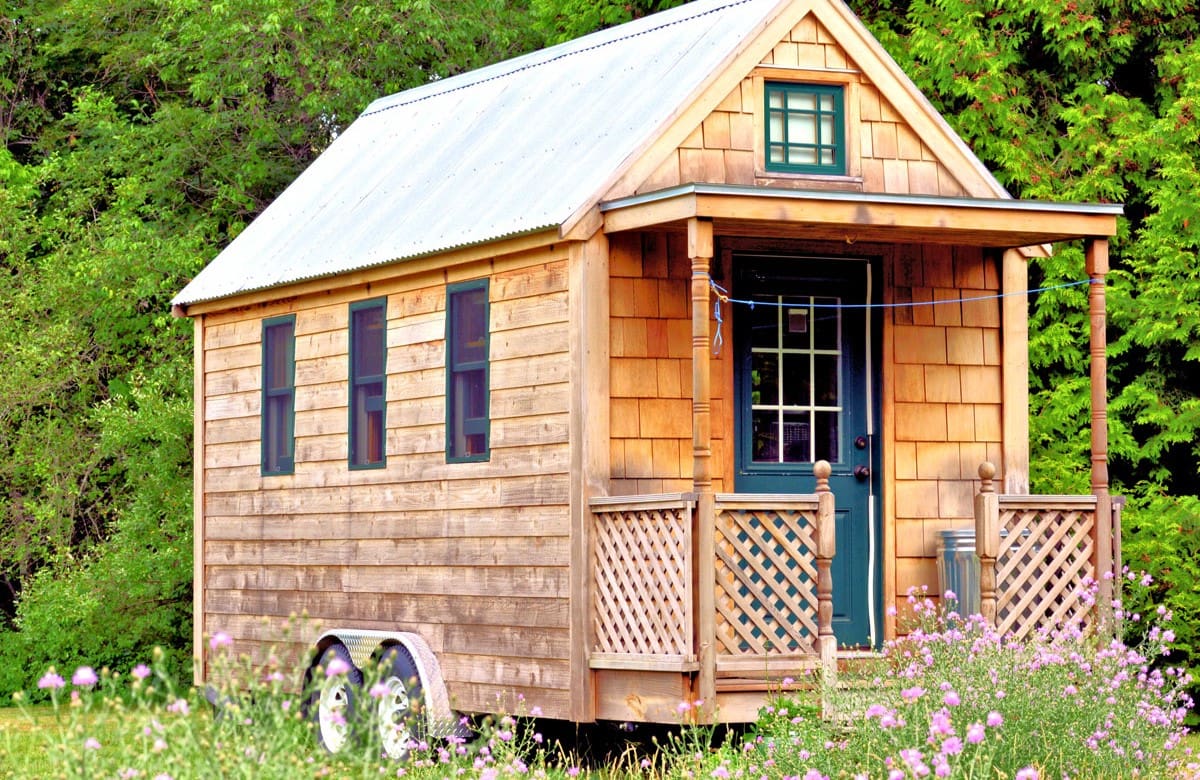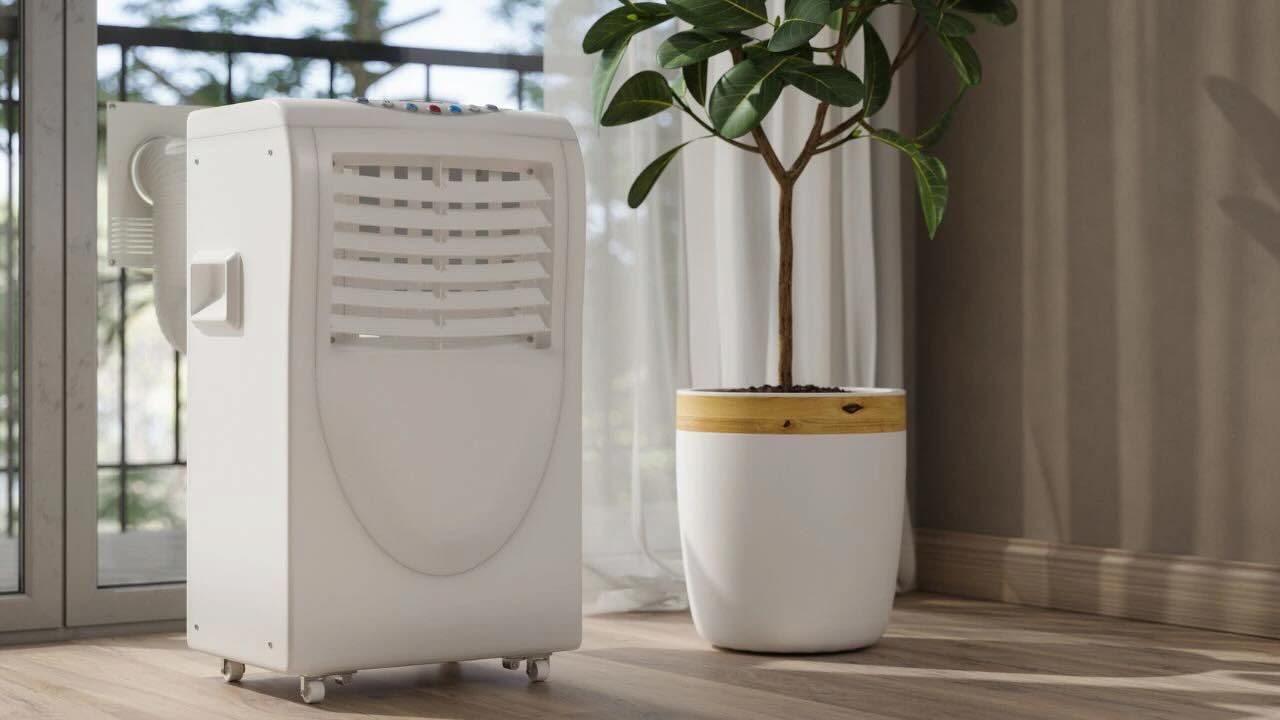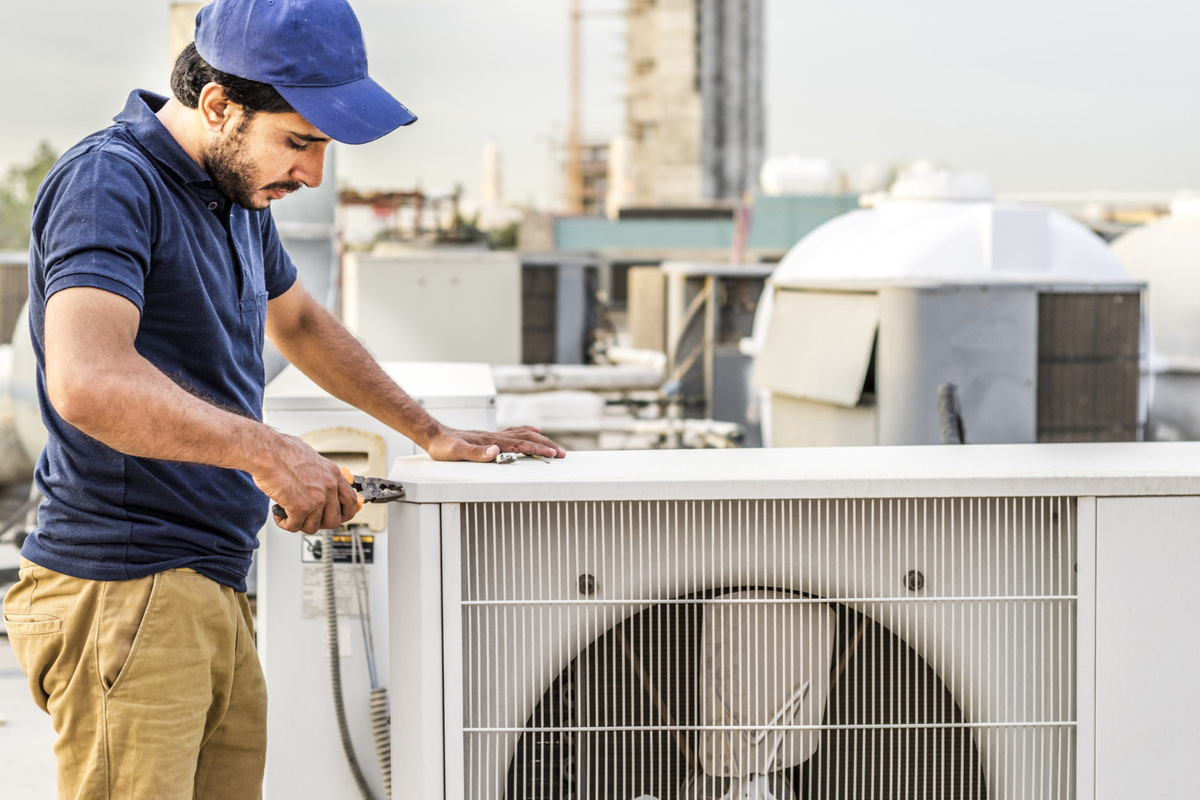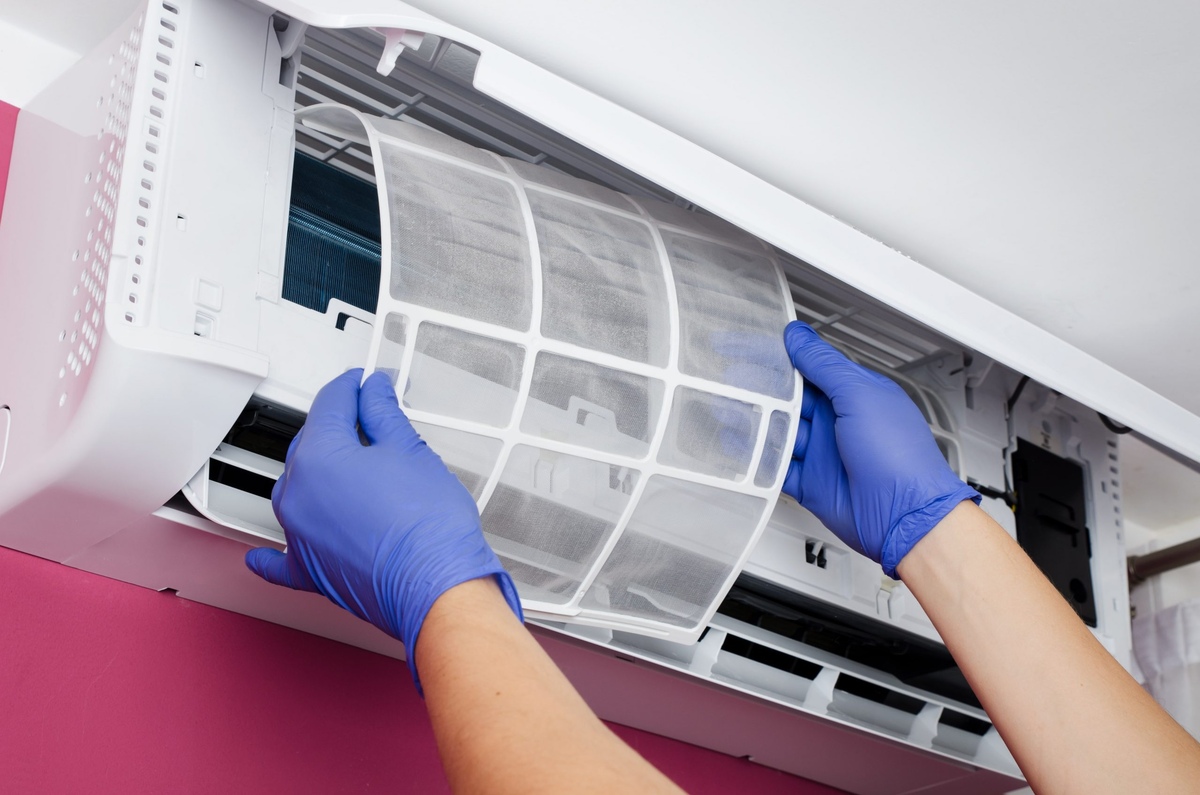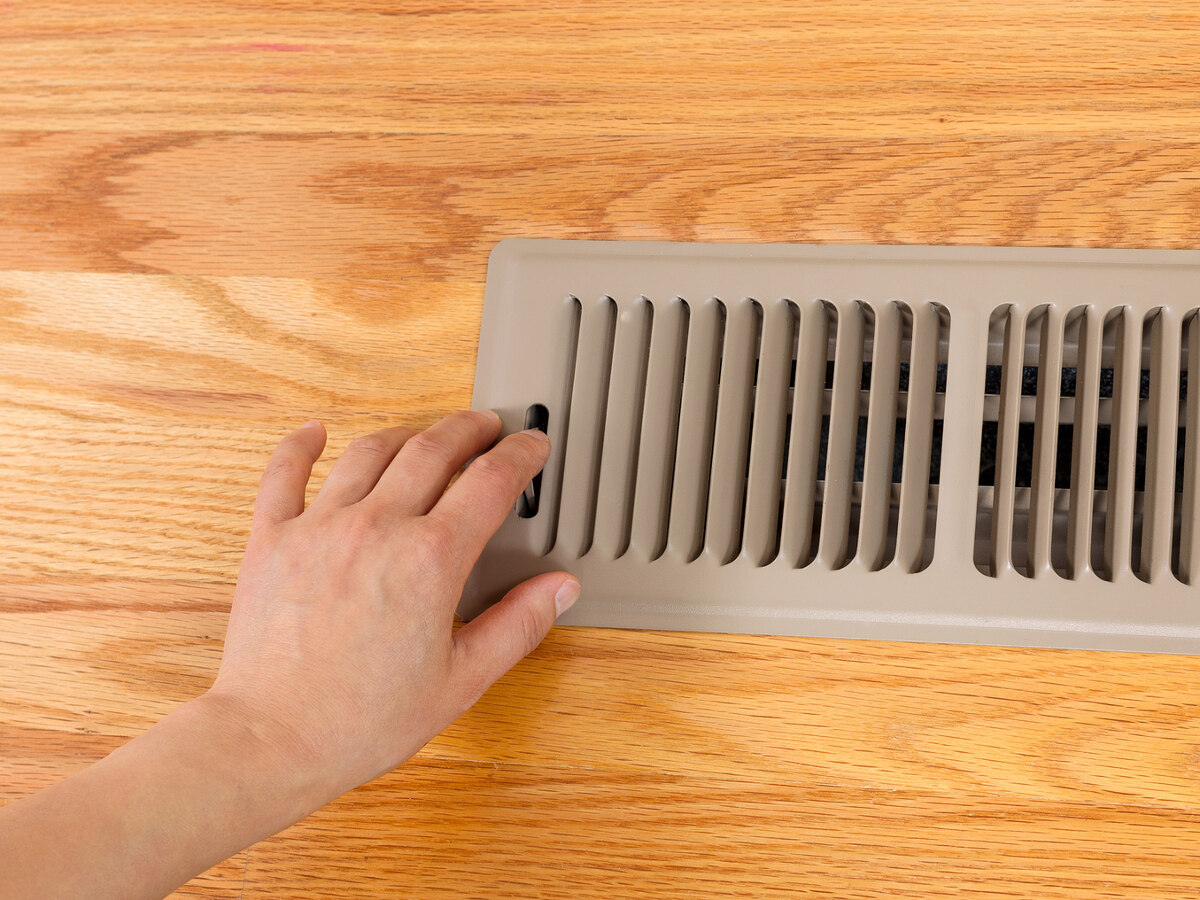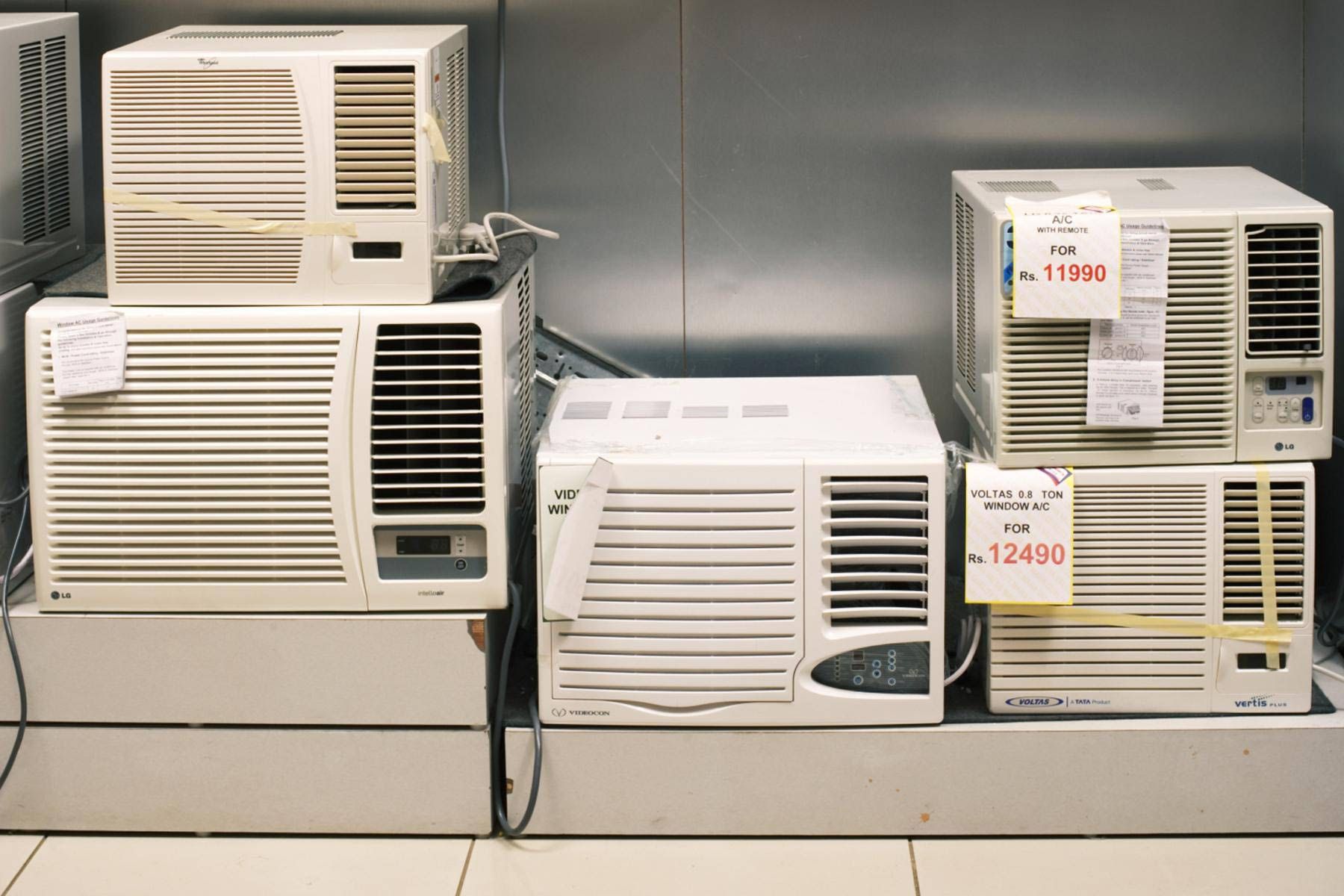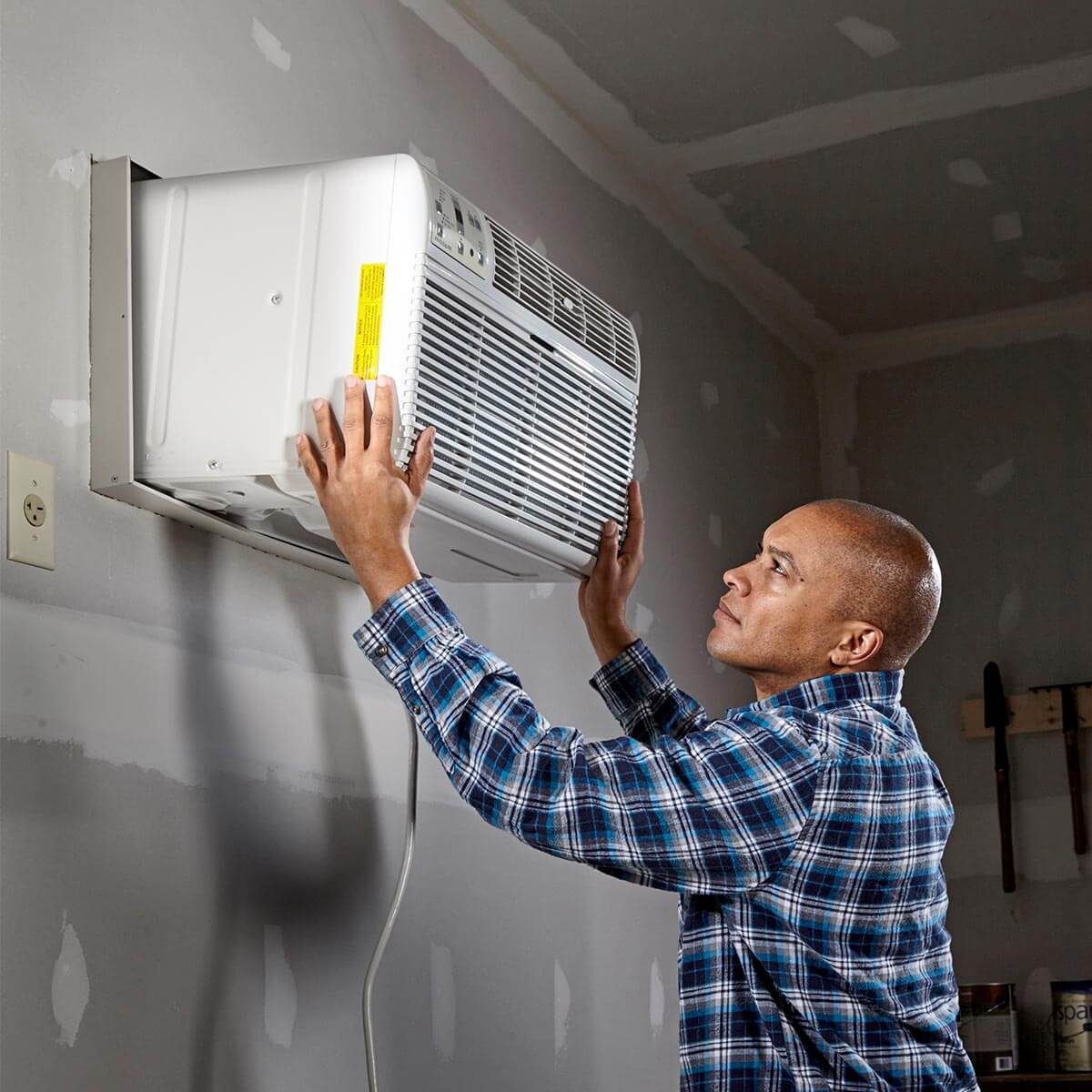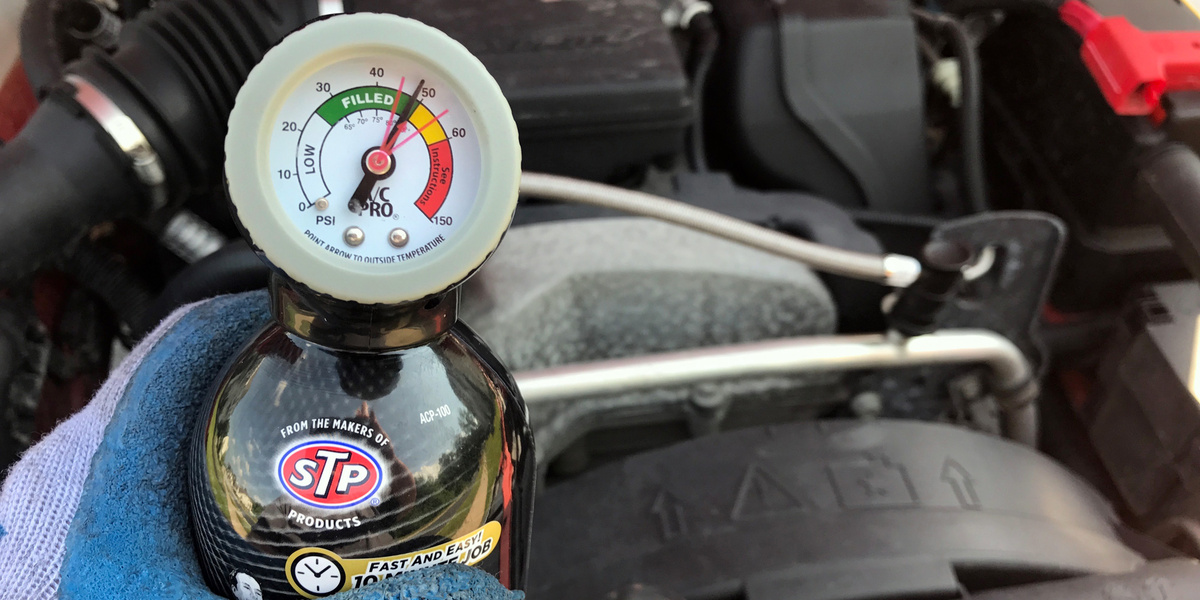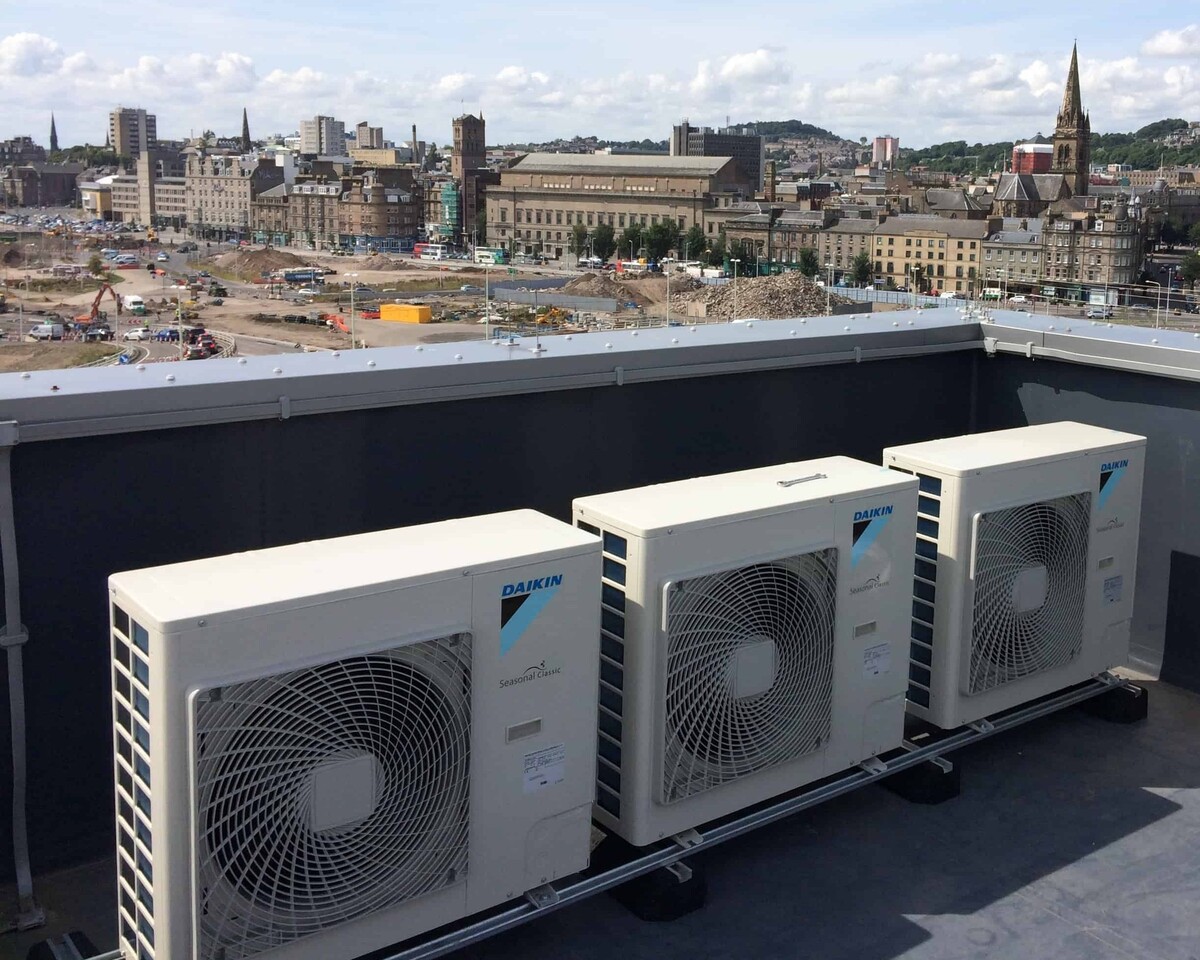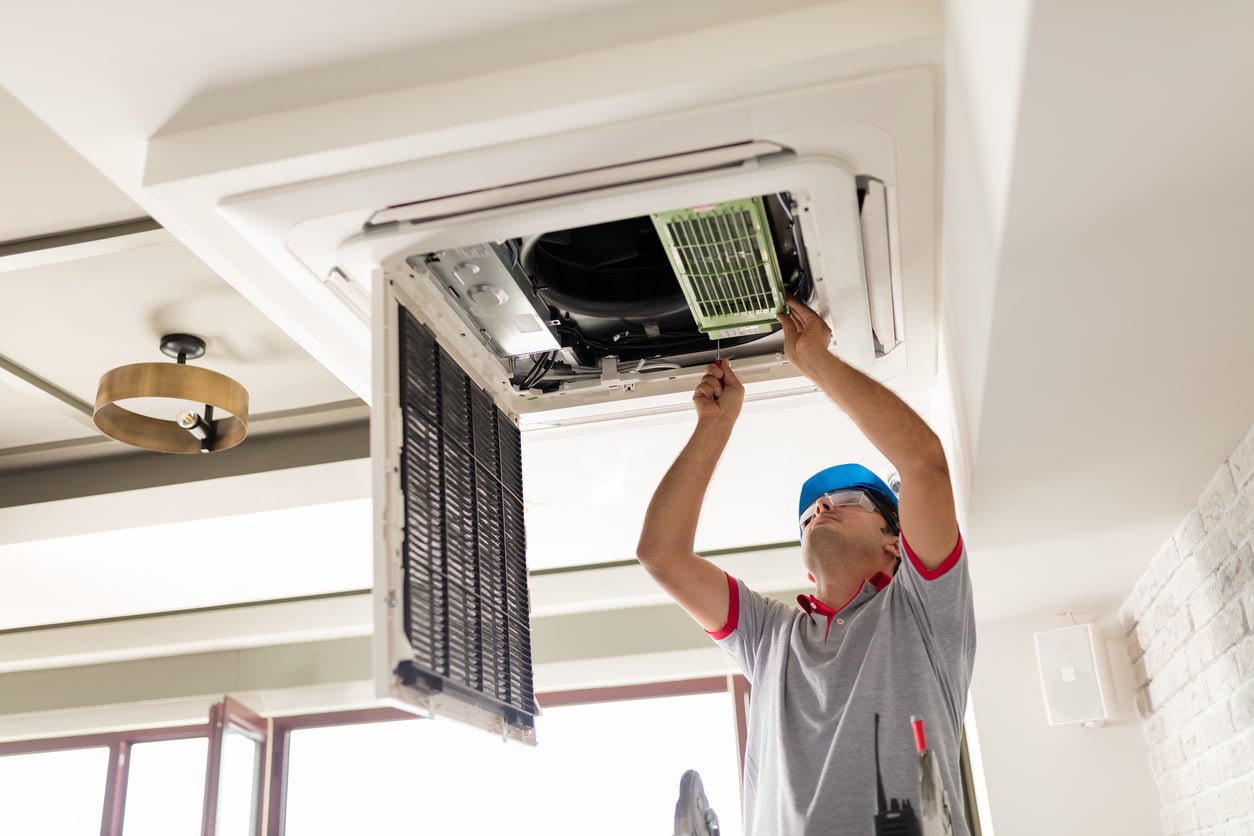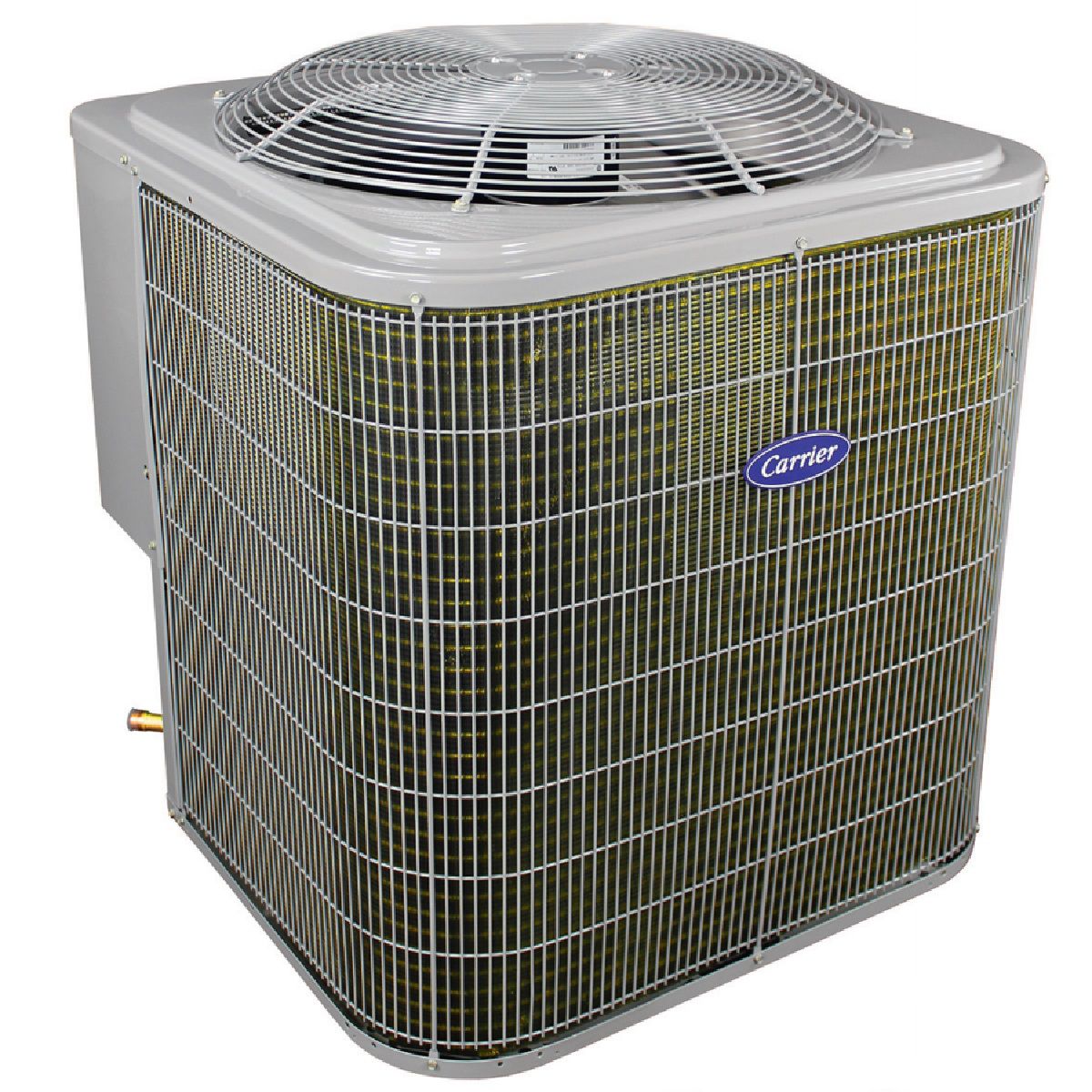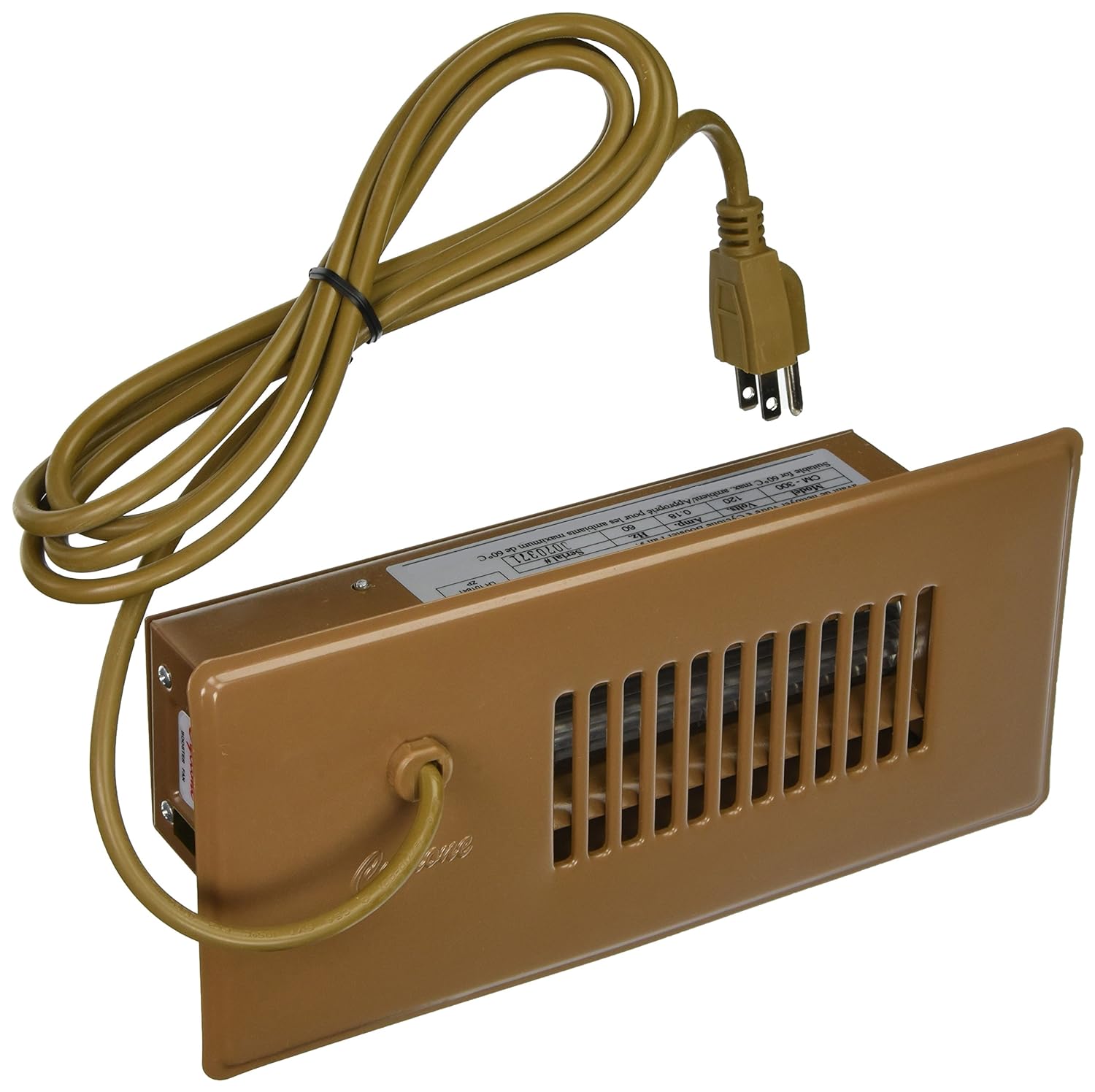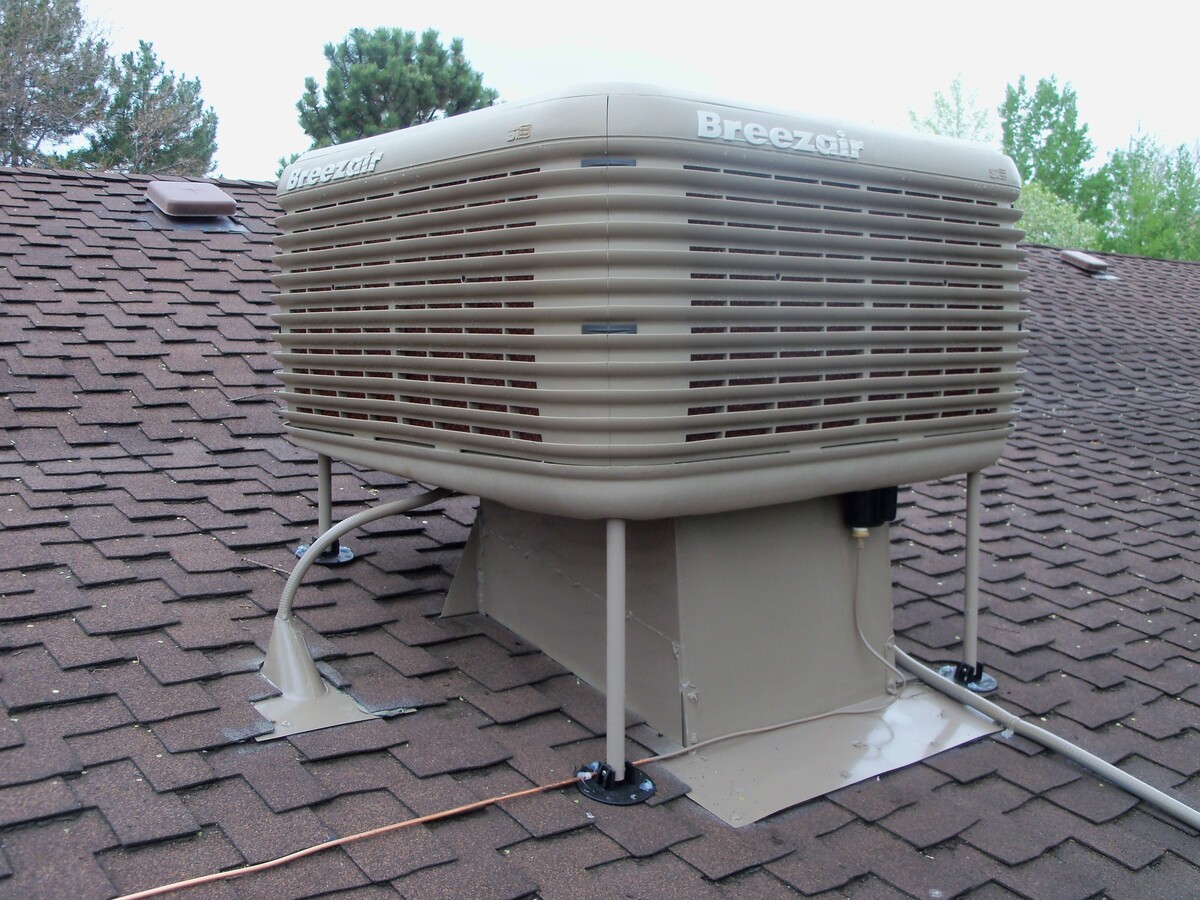Home>Home Maintenance>How To Hide An Air Conditioning Unit
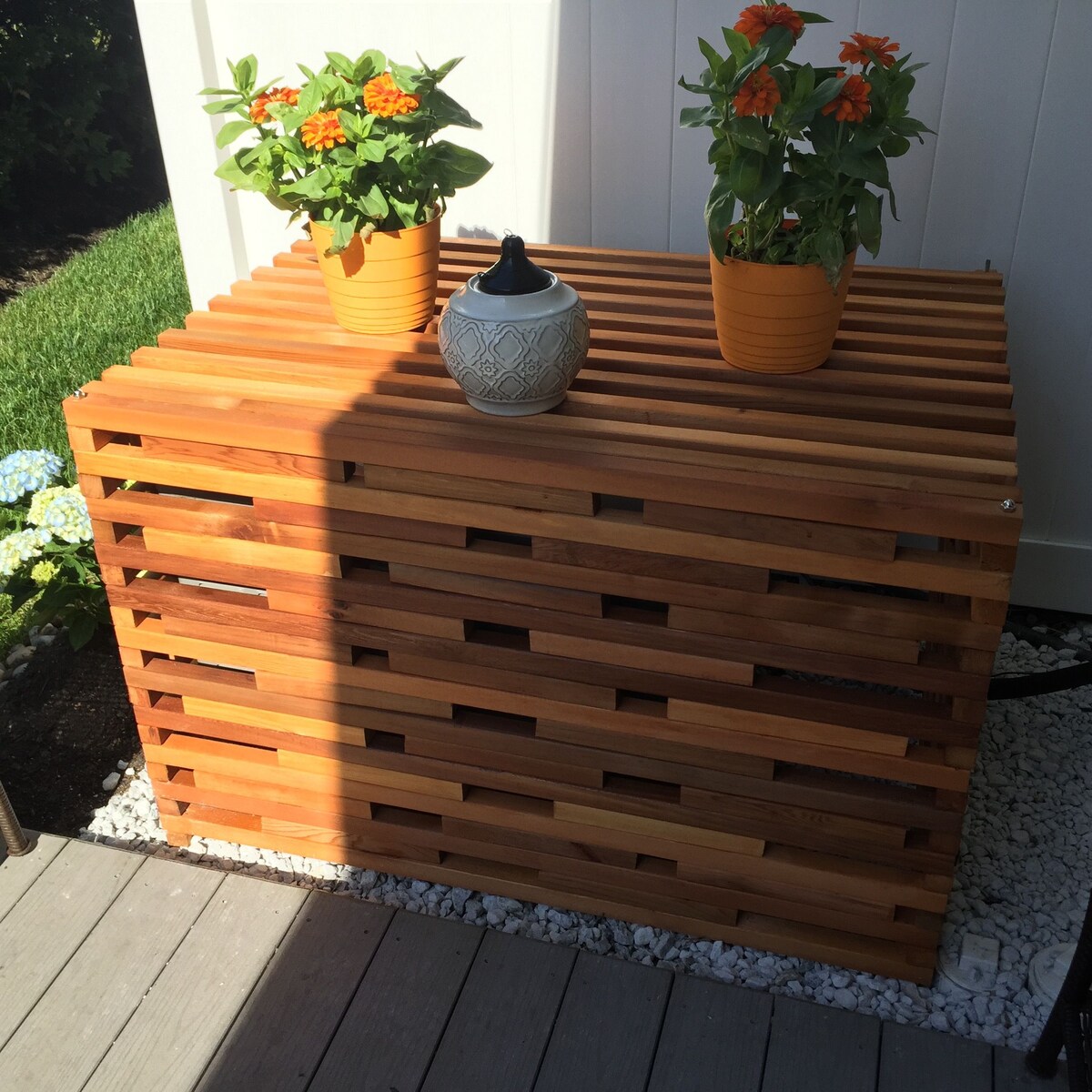

Home Maintenance
How To Hide An Air Conditioning Unit
Modified: March 6, 2024
Looking for ways to hide your air conditioning unit? Check out our helpful guide on home maintenance tips and tricks to conceal your AC unit and improve the aesthetics of your outdoor space.
(Many of the links in this article redirect to a specific reviewed product. Your purchase of these products through affiliate links helps to generate commission for Storables.com, at no extra cost. Learn more)
Introduction:
During the scorching summer months, having a functioning air conditioning unit is a blessing. However, the sight of an unsightly AC unit installed outside your home can be a real eyesore. Luckily, there are several creative ways to hide your air conditioning unit and maintain the aesthetics of your outdoor space.
Not only does hiding your AC unit improve the overall appearance of your home, but it also provides additional benefits such as protecting the unit from harsh weather conditions and reducing noise pollution. From DIY methods to landscaping ideas and custom enclosures, there are numerous options to choose from that seamlessly integrate the AC unit into your outdoor decor.
In this article, we will explore the various methods and factors to consider when hiding an air conditioning unit. Whether you prefer a rustic and natural look or a modern and sleek design, we have got you covered. Let’s dive in!
Key Takeaways:
- Hide your air conditioning unit to improve your outdoor space’s appearance, protect the unit, reduce noise, and enhance energy efficiency. Consider DIY methods, landscaping, custom enclosures, and furniture camouflage for creative solutions.
- Before hiding your air conditioning unit, prioritize proper airflow, accessibility, local regulations, weather conditions, budget, and aesthetic preferences. Follow safety and maintenance tips to ensure optimal performance and longevity of the unit.
Read more: How To Hide AC Unit
Reasons to Hide an Air Conditioning Unit:
There are several reasons why you may want to hide your air conditioning unit. Here are a few of the most common:
- Aesthetics: One of the main reasons homeowners choose to conceal their AC units is to enhance the overall appearance of their outdoor space. AC units often have a bulky and industrial look that doesn’t blend well with the surrounding environment. By hiding the unit, you can create a more visually appealing and cohesive outdoor design.
- Privacy: If your air conditioning unit is positioned near a common outdoor area, such as a patio or seating area, it may make you feel exposed. Concealing the unit can provide an added layer of privacy, allowing you to enjoy your outdoor space without feeling like you’re being constantly observed.
- Protection: Exposing your AC unit to the elements can lead to damage and decrease its lifespan. Hiding the unit can provide protection from rain, snow, and extreme temperatures, preserving its functionality and efficiency for longer.
- Noise Reduction: While air conditioning units are designed to operate quietly, they can still produce some noise. By using methods to hide the unit, such as enclosures or barriers, you can help muffle the sound and create a more peaceful outdoor environment.
- Improved Energy Efficiency: Hiding your AC unit can also have a positive impact on energy efficiency. When the unit is exposed to direct sunlight or placed in an area without proper ventilation, it may have to work harder to cool your home. By concealing the unit and providing shade or proper airflow, you can optimize its efficiency and potentially reduce your energy consumption.
Overall, hiding your air conditioning unit offers numerous benefits, from enhancing aesthetics and privacy to protecting the unit and improving energy efficiency. With the right methods and design choices, you can seamlessly integrate the unit into your outdoor space and create a more enjoyable environment for you and your family.
Factors to Consider Before Hiding an Air Conditioning Unit:
Before diving into the various methods of hiding your air conditioning unit, it is important to consider certain factors to ensure a successful and functional solution. Here are some key considerations:
- Airflow: Adequate airflow is crucial for the proper functioning of your AC unit. When concealing the unit, make sure to allow enough space for air to circulate freely. Blockages or inadequate ventilation can result in reduced efficiency and potential damage to the unit. Consult your unit’s manufacturer guidelines for recommended clearance distances.
- Accessibility: While it is important to hide your AC unit, you should also consider accessibility for maintenance and repairs. Ensure that the chosen hiding method allows easy access to the unit so that technicians can perform routine maintenance or address any issues that may arise.
- Local Regulations: Before hiding your air conditioning unit, familiarize yourself with any local regulations or building codes that may govern its placement and concealment. Some areas have restrictions on how and where units can be hidden, so it’s important to do your research and ensure compliance.
- Weather Conditions: Take into account the weather conditions in your area when choosing the hiding method. If you experience heavy rains or strong winds, opt for more durable and weather-resistant materials that can withstand the elements and protect the unit effectively.
- Budget: Consider your budget when deciding how to hide your AC unit. Some methods, such as custom enclosures or professional landscaping, may involve higher costs. Determine what you are willing to invest and explore cost-effective alternatives if needed.
- Aesthetic Preferences: Think about the overall style and appearance you want to achieve. Consider the existing design elements of your outdoor space and choose a hiding method that complements your home’s architecture and your personal taste. Whether you prefer a natural, rustic look or a modern, sleek design, align your choices accordingly.
By considering these factors, you can make informed decisions about the best method to conceal your air conditioning unit. While aesthetics are important, it is equally vital to prioritize functionality, accessibility, and adherence to local regulations. A well-planned hiding solution will not only enhance the appearance of your outdoor space but also ensure the longevity and efficiency of your AC unit.
DIY Methods to Conceal an Air Conditioning Unit:
If you’re a handy homeowner looking for a cost-effective way to hide your air conditioning unit, there are several DIY methods you can consider. These methods allow you to get creative while seamlessly integrating the unit into your outdoor space. Here are a few ideas:
- Build a Lattice Screen: Constructing a lattice screen is a great way to hide your AC unit while still allowing proper airflow. Use wooden or PVC lattice panels and create a freestanding or wall-mounted enclosure around the unit. You can paint or stain the lattice to match your outdoor decor and even add climbing plants for additional camouflage.
- Create a Pallet Fence: Upcycle wooden pallets to build a simple and affordable enclosure for your AC unit. Disassemble the pallets, removing any nails or screws, and use the planks to create a rustic fence-like structure around the unit. Paint or seal the pallets to protect them from the elements and add a touch of color to your outdoor space.
- Design a Trellis: Install a trellis against a wall or fence to camouflage your AC unit. Choose a trellis with large openings to allow air circulation. Paint the trellis to match your surroundings and consider adding climbing plants to further conceal the unit. Ensure the trellis is secure and doesn’t obstruct access to the unit for maintenance.
- Construct a Shrub Enclosure: Use shrubs or tall plants to create a natural enclosure around your air conditioning unit. Select dense, evergreen plants that can provide year-round coverage. Make sure to leave enough space between the plants and the unit for proper ventilation and easy maintenance access. Regular pruning will help maintain a neat appearance.
- Build an Outdoor Storage Bench: Hide your AC unit while simultaneously adding extra seating and storage space with a DIY outdoor storage bench. Construct a wooden bench with a hinged top, allowing easy access to the unit when needed. Make sure to include ventilation holes or slats in the design to maintain airflow.
These are just a few examples of DIY methods to conceal your air conditioning unit. The key is to choose a method that suits your skill level, matches your aesthetic preferences, and provides proper airflow and access for maintenance. Be sure to measure and plan accordingly before starting any construction project, and always prioritize safety and functionality.
Remember, while DIY methods can be cost-effective and fun, it’s essential to ensure that you are not obstructing the unit or violating any local regulations. If in doubt, consult with a professional to ensure your DIY project meets all necessary standards.
Landscaping Ideas to Hide an Air Conditioning Unit:
Integrating your air conditioning unit into your landscaping can be an excellent way to hide it while adding beauty and functionality to your outdoor space. Here are some landscaping ideas to consider:
- Create a Garden Bed: Build a raised garden bed around your AC unit to camouflage it with vibrant flowers, shrubs, or herbs. Choose plants that are suitable for your climate and provide year-round coverage. Ensure that the garden bed doesn’t obstruct the unit’s airflow, and leave enough space for maintenance access.
- Install a Decorative Fence or Wall: Use a decorative fence or wall to conceal your AC unit. Opt for materials that complement your outdoor design, such as wood, stone, or metal. Add decorative elements like lattice panels, artwork, or climbing plants to further disguise the unit while allowing proper airflow.
- Build a Fountain or Water Feature: Transform the area around your air conditioning unit into a soothing oasis by incorporating a fountain or water feature. The sound of running water can help mask any noise produced by the unit, while the aesthetic appeal of the feature draws attention away from the AC unit.
- Install a Retractable Trellis: Consider installing a retractable trellis system that allows you to hide or reveal your AC unit when needed. These trellises are versatile, providing the ability to conceal the unit while still maintaining easy access for maintenance and repairs.
- Create Natural Berms or Mounds: Use natural berms or mounds to strategically elevate areas around the AC unit. Cover them with a combination of rocks, plants, or groundcover to blend seamlessly with the surrounding landscape. This method not only hides the unit but also adds dimension and texture to your outdoor space.
When implementing landscaping ideas, ensure that you consider the unit’s maintenance and accessibility. Leave enough space around the AC unit for proper airflow and easy servicing. Additionally, choose plants and materials that are suitable for your climate and require minimal upkeep, as you wouldn’t want your landscaping to become a hassle.
Consult with a professional landscaper if you’re unsure about the best approach or if you need assistance in creating a cohesive design that seamlessly integrates your air conditioning unit into your overall landscape.
Consider using a lattice or fence to create a screen around the air conditioning unit, allowing for airflow while hiding it from view.
Read more: How To Hide Window AC Unit Inside
Creating Custom Enclosures for Air Conditioning Units:
If you’re seeking a more polished and tailored solution to hide your air conditioning unit, consider creating a custom enclosure. This allows you to design a structure that matches your home’s aesthetics while providing functionality and protection for the unit. Here are a few ideas for creating custom enclosures:
- Wooden Enclosures: Build a wooden enclosure around your AC unit using weather-resistant materials like cedar or redwood. Construct a structure with proper ventilation, allowing sufficient airflow for the unit. Paint or stain the wood to match your home’s exterior or add decorative elements such as lattice panels or trim to enhance the design further.
- Brick or Stone Enclosures: For a more permanent solution, consider using bricks or stones to construct an enclosure. This creates a visually appealing structure that offers durability and protection for your AC unit. Incorporate architectural features like arches or pillars to enhance the aesthetics and blend with your home’s design.
- Metal Enclosures: If you prefer a sleek and modern look, consider using metal materials to create an enclosure. Options like aluminum or galvanized steel offer durability and resistance to the elements. You can opt for a full enclosure or a combination of metal panels and decorative screens to allow airflow and add visual interest.
- Prefabricated Enclosures: Another option is to use prefabricated enclosures specifically designed for air conditioning units. These enclosures come in various materials and styles, offering ease of installation and customization. Some prefabricated options even allow for additional storage or seating features, maximizing functionality in your outdoor space.
- Blend with Existing Structures: If you have existing outdoor structures like a shed, gazebo, or pergola, consider incorporating the AC unit into the design. Modify the structure or add a discreet wall or screen to conceal the unit while maintaining the cohesiveness of your outdoor space.
When creating a custom enclosure, ensure that you carefully measure your AC unit and allow for proper airflow and access for maintenance purposes. Also, consult any local regulations or building codes to ensure compliance with any requirements.
Custom enclosures not only hide your air conditioning unit but also provide an opportunity to showcase your creativity and design skills. They can seamlessly integrate with your home’s architecture and enhance the overall aesthetics of your outdoor space.
Using Furniture and Accessories to Camouflage an Air Conditioning Unit:
If you’re looking for a creative and versatile way to hide your air conditioning unit, consider using furniture and accessories to camouflage it. By strategically placing items in your outdoor space, you can effectively divert attention from the unit while adding functionality and style. Here are a few ideas:
- Outdoor Screens or Room Dividers: Position decorative outdoor screens or room dividers around your air conditioning unit to create a visual barrier. Choose screens made from materials like bamboo or rattan for a natural look, or opt for metal or fabric screens for a more contemporary feel. These screens not only conceal the unit but also provide privacy and add a touch of elegance to your outdoor space.
- Planters or Vertical Gardens: Use large planters or create a vertical garden to disguise your air conditioning unit. Place planters strategically around the unit, selecting plants that provide dense foliage or trailing vines. This approach not only hides the unit but also adds greenery and natural beauty to your outdoor area.
- Outdoor Furniture Arrangement: Arrange your outdoor furniture in a way that strategically diverts attention from the air conditioning unit. Position seating areas, tables, or lounge chairs in such a way that they create a focal point away from the unit. This clever arrangement will draw the eye to more visually appealing areas of your outdoor space.
- Decorative Outdoor Artwork: Hang decorative outdoor artwork or sculptures on walls or fences near the air conditioning unit. These pieces add visual interest and become a focal point, effectively diverting attention from the unit. Opt for weather-resistant pieces that can withstand the elements.
- Creative Camouflage Covers: Consider using creative camouflage covers specifically designed to hide air conditioning units. These covers come in various designs, such as printed images that mimic natural elements like hedges, flowers, or trees. They effectively transform the unit into a more visually appealing feature while still allowing proper airflow.
When using furniture and accessories to camouflage your air conditioning unit, ensure that you leave enough space around the unit for proper ventilation and maintenance. Avoid placing items directly on top of or in front of the unit, as this can obstruct its functionality.
Furniture and accessories offer a flexible and convenient way to hide your air conditioning unit while adding functionality and style to your outdoor space. By incorporating these elements strategically, you can create an inviting and appealing ambiance that seamlessly integrates the unit into the overall design.
Safety and Maintenance Tips for Hidden Air Conditioning Units:
When hiding your air conditioning unit, it’s important to ensure its safety and maintain its functionality. Here are some essential safety and maintenance tips to keep in mind:
- Proper Ventilation: When concealing your AC unit, make sure to provide adequate ventilation to prevent overheating. Avoid completely enclosing the unit or blocking airflow. Leave enough space around the unit and use materials that allow for proper ventilation, such as lattice panels or screens.
- Regular Cleaning: Even when hidden, your AC unit requires regular cleaning to maintain its efficiency. Periodically remove any debris, leaves, or vegetation that may have accumulated around or inside the unit. This will prevent airflow blockage and ensure optimal performance.
- Maintenance Access: Ensure that your hiding method allows for easy access to the unit for routine maintenance or repairs. This includes being able to remove any coverings or panels without difficulty. Accessibility is crucial for maintaining the unit’s functionality and efficiency.
- Weather and Waterproofing: If your hiding method involves using materials like wood or fabric, ensure they are weather-resistant and properly treated to withstand the elements. Protect the unit and the surrounding area from water damage by sealing any gaps or cracks that could allow moisture to seep in.
- Professional Inspections: Schedule regular maintenance inspections with a professional HVAC technician to ensure the optimal performance of your air conditioning unit. They can clean and service the unit, check for any potential issues, and make necessary repairs or adjustments.
- Comply with Safety Regulations: Before hiding your air conditioning unit, be familiar with and adhere to any local regulations or safety guidelines. These regulations may include clearance distances, electrical safety, and the use of proper materials. Non-compliance could lead to potential hazards or legal issues.
Remember, the purpose of hiding your air conditioning unit is to enhance the aesthetics of your outdoor space while maintaining its functionality. By following these safety and maintenance tips, you can ensure that the unit operates efficiently and safely, providing optimal cooling for your home.
If you’re unsure about any safety or maintenance procedures, it’s always best to consult with a professional HVAC technician who can provide expert advice specific to your air conditioning unit and your hiding method.
Conclusion:
Hiding your air conditioning unit can greatly improve the aesthetics of your outdoor space while offering protection and functionality. Whether you choose a DIY method, landscaping ideas, custom enclosures, or the use of furniture and accessories, there are numerous creative ways to seamlessly integrate the unit into your outdoor design.
Before hiding your air conditioning unit, consider factors such as proper airflow, accessibility, local regulations, weather conditions, budget, and your aesthetic preferences. These considerations will help you make informed decisions and ensure a successful outcome.
By following safety and maintenance tips, you can ensure the optimal performance and longevity of your air conditioning unit. Regular cleaning, proper ventilation, and professional inspections are key to keeping the unit operating efficiently and avoiding potential issues.
Remember, whether you prefer a natural and landscaped look or a more refined and customized design, the goal is to hide the unit while maintaining its functionality. Let your creativity shine and transform your outdoor space into an inviting and beautiful area where the air conditioning unit seamlessly blends in.
With the wide range of hiding options available, you can turn an unsightly AC unit into a well-integrated and visually appealing feature. Enjoy the benefits of a hidden air conditioning unit, from improved aesthetics and privacy to enhanced energy efficiency and reduced noise.
Take the time to explore different methods and consult professionals if needed. With careful planning and implementation, you can create an outdoor space that is both functional and aesthetically pleasing, providing a cool and relaxing environment during the hot summer months.
Frequently Asked Questions about How To Hide An Air Conditioning Unit
Was this page helpful?
At Storables.com, we guarantee accurate and reliable information. Our content, validated by Expert Board Contributors, is crafted following stringent Editorial Policies. We're committed to providing you with well-researched, expert-backed insights for all your informational needs.
